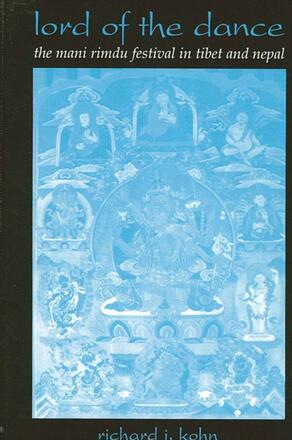
Lord of the Dance
The Mani Rimdu Festival in Tibet and Nepal
Alternative formats available from:
A first-hand description of the Mani Rimdu festival of Tibet and Nepal, an event which encapsulates the Himalayan Buddhist experience.
Description
Richard Kohn's book transports the reader to the high Himalayas for an in-depth look at the inner workings of the three-week long Mani Rimdu festival. This event encapsulates the breadth and depth of the Himalayan Buddhist experience, from the profound practices of Great Perfection meditation to the worship of the gods of the neighboring mountains. The festival uses archaic material as well as prayers written by contemporary lamas, and it entails the preparation of numerous works of ritual art such as man'd'alas constructed of colored sand and sculptures of barley flour and colored butter called tormas. Two days of public performance, a day of spiritual empowerment, and a day of masked dance complete the festival.
A description of Mani Rimdu from beginning to end, Lord of the Dance goes on to consider the structure of Tibetan ritual and its place within the history of South and Central Asian religions. In addition, the author discusses ritual as an art form and analyses the transformation of a textual tradition into performance art. Through the small window of the Himalayan festival, the book overlooks the vast horizon of the Buddhist experience.
Richard J. Kohn was a Research Associate at the University of California, Berkeley and Director of the Buddhist Film Society/ International Buddhist Film Festival. Mani Rimdu was the subject of Kohn's classic documentary films Lord of the Dance/ Destroyer of Illusion and Destroyer of Illusion: The Secret World of a Tibetan Lama.
Reviews
"The great contribution of this work lies in its almost unparalleled comprehensiveness … Kohn has left us with a legacy of admirably disciplined and impassioned research on an ill-understood aspect of Tibetan religious culture. It stands as an excellent reference work and point of departure for further study. " — Journal of the American Oriental Society
"Lord of the Dance presents a wonderful mass of observed detail woven together with an emphasis on the Tibetan's lived experience of underlying dynamics and rationales. The detail not only concerns the performance of the ritual, but also the participation and role of the wider circles of Tibetan/Sherpa society. " — David Germano, University of Virginia
"An excellent treatise and explanation of a major Tibetan/Sherpa ritual. Kohn tells the story of the ritual and explains much more about Buddhist practice, symbolism, and epistemology in the process. " — Vincanne Adams, author of Tigers of the Snow and Other Virtual Sherpas: An Ethnography of Himalayan Encounters